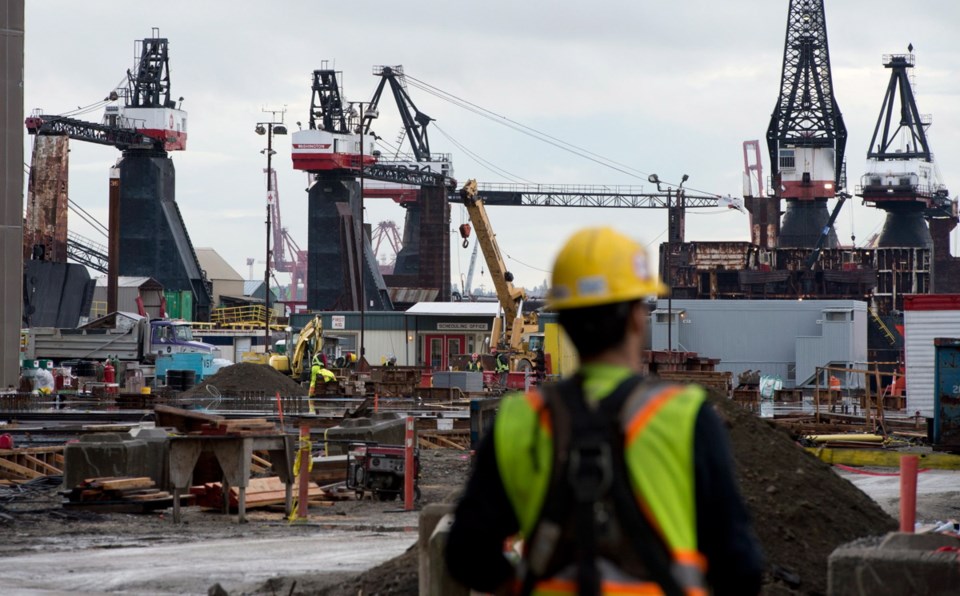A $3.3-billion federal shipbuilding windfall announced Monday will provide more work at Victoria and Vancouver shipyards, extending years-long construction already lined up in this province.
Up to 10 additional Canadian Coast Guard ships will be built on the West Coast, bringing the total to at least 17 under the massive federal shipbuilding program, which aims to revitalize Canada’s fleet of combat and non-combat vessels. This boosts the shipbuilding program’s value to $11.3 billion in B.C.
“Victoria Shipyards will touch every one of them,” Brian Carter, Seaspan Shipyards president, said from North Vancouver. Seaspan owns Vancouver and Victoria shipyards where the ships will be constructed.
“We will build the vessels here as far as we can on land and then when it comes time to put them in water, we’ll do that here and take them immediately over to Victoria for the final outfitting, commissioning, test and trials.”
About 10 per cent of work will be in Victoria, Carter said.
Monday’s announcement by Public Works Minister Diane Finley in North Vancouver revealed that the latest plan will deliver up to five multi-tasked vessels and another five offshore patrol vessels.
Seaspan won the right in 2011 to build non-combat ships for $8 billion. Irving Shipbuilding, of Halifax, will build $25 billion worth of combat vessels.
Some money is also budgeted for smaller vessels.
The additional ships boost the total value of the federal program to $38.3 billion.
The first steel for vessels built in Vancouver will be cut in October 2014, when a $200-million modernization project wraps up at the shipyard, Carter said.
Three offshore fisheries science vessels will be built first, followed by an offshore oceanographic science ship. Carter expects to hear soon on the sequence for building joint support ships and an icebreaker.
Seaspan can build one type of vessel at a time, meaning that at any given time, two or three ships of one design can be under construction, Carter said.
The company will work with the coast guard on construction timing for the newly announced vessels. “It’s our expectation that would happen after we built the seven vessels that are currently on our order book.”
In the long term, Carter said the hope is to get 20 to 30 years’ worth of work under federal contracts.
A report from the federal auditor general examining the federal shipbuilding program will be released shortly. Carter said the process has been fair and above board.
George MacPherson, president of the Shipyard General Workers’ Federation, said in an interview that the additional vessels “certainly give us a good warm feeling of continuity of work.”
Training is gearing up in Victoria and on the Lower Mainland to meet the demand for skilled workers. The North Vancouver yard has 150 workers today and anticipates that will rise to 1,000 in the next few years, Carter said.
Challenges faced in training workers include finding enough space in educational facilities and ensuring that training lines up with availability of jobs, he said. “It is going to be critical how we handle that.”



